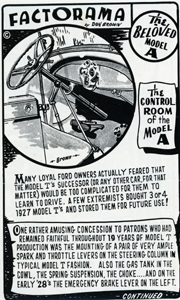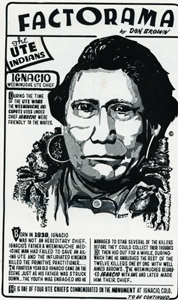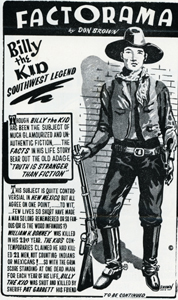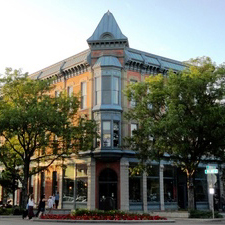Don Brown, Fort Collins Artist: 1947-1971
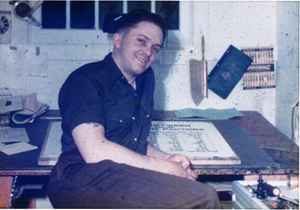
Don Brown at his desk
at Colorado A & M, 1953
When Don returned to Fort Collins with Mid and baby Norma, he began working for Colorado Agricultural and Mechanical College (A & M) in the Audio & Visual department. At Colorado A & M, he did many miscellaneous illustration jobs. He designed and illustrated letterheads, advertisements, announcements, and covers of various academic quarterlies.
By 1953, he discontinued his employment with Colorado A & M and began work as a freelance artist. With his background in commercial art, it was a natural for him to progress to sign painting and his own "Donald Brown Sign Co." During this period of self-employment, Don painted the Coca-Cola sign on the side of the CooperSmith's Brewery in "Old Town" Fort Collins and other wall signs and business signs in the Fort Collins area. (At the time of his oral history interview in 2000, Don claimed that the Coca-Cola sign was his favorite sign job.) In the same period, he was in stiff competition with the only other sign painter in town, Harold Asmus. As part of his signature, Asmus would sign each work with "Asmus, of course." In reply to this signature mark, Don developed his own trademark, "Brown, who else?" (Asmus' old shop can be found next to the Nonesuch Theatre, Pine St., Old Town Fort Collins.) Don also painted posters and other forms of advertisements for companies. These are two examples of his advertising work (one for a national company and one for a local company).
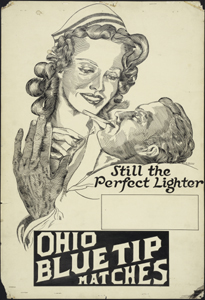
Advertisement by Brown
for Ohio Blue Tip matches
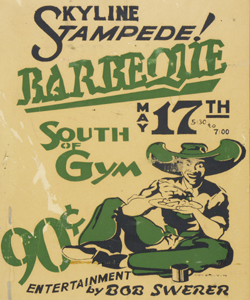
Poster
In the early 1960s, Don's interest in the Old West, the Ute Indians and antique automibiles led him to create his "Factorama" series. Factorama are well-researched informational tidbits and detailed drawings along the same theme. While his "Factorama" were rarely printed in magazines or newspapers, Don continued to make them throughout his life. The three Factorama included in this page are taken from his three major areas. In each of them, the drawing is the centerpiece of the work and the text is designed around the details of the artwork.
In 1960, Don decided to return to Colorado A & M, now called Colorado State University (CSU). Although some things had changed, he took on the same work as before (samples of his work from this time are similar to that of 1947-1953). In 1964, however, he returned to self-employment.
Ironically, about the same time he left CSU, his daughter Norma began to attend the University, studying languages, Spanish and Italian. Steve Mack, a friend of the Browns' and just one year behind Norma in school, said that everybody expected great things from her; however, a tragedy intervened in her young life.
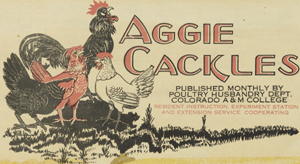
Page header done during
Brown's stay at Colorado A & M
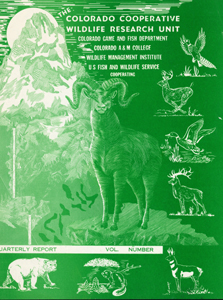
Cover for Colorado A & M quarterly
Norma met Fernando Martinez, a graduate student from Spain attending CSU on a Fulbright Scholarship. The two fell in love and moved to Madrid to get married. About six months after they were married, Norma and Fernando were in a head-on car accident on a Spanish highway. Fernando survived, but Norma did not. The Browns had Norma's body sent back to Fort Collins to be buried, and only sporadically kept in contact with Fernando. In a touch of irony, Fernando died ten years later along the same stretch of highway in a similar accident. The Browns never truly recovered from their loss; however, the loss did precipitate a new and adventurous phase of their life.
These are two of the many examples of the work Don did for Colorado A & M/CSU during his two five-year periods of employment.
